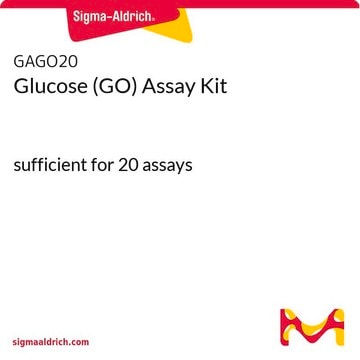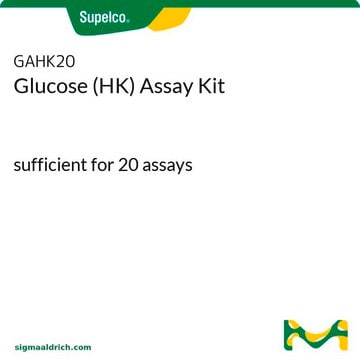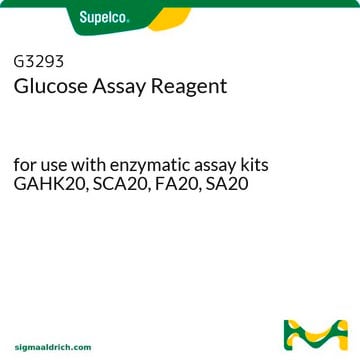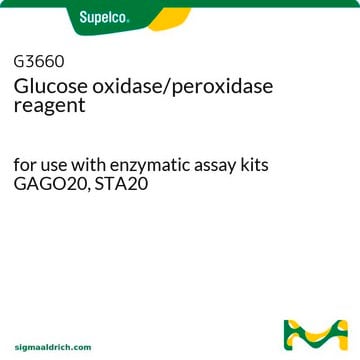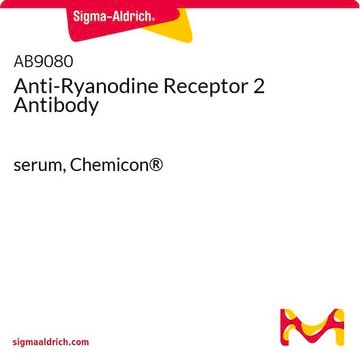MAK018
Maltose and Glucose Assay Kit
sufficient for 100 colorimetric or fluorometric tests
About This Item
Recommended Products
usage
sufficient for 100 colorimetric or fluorometric tests
application(s)
cosmetics
food and beverages
detection method
colorimetric
fluorometric
relevant disease(s)
endocrinological disorders, diabetes
storage temp.
−20°C
General description
Application
Suitability
Principle
related product
signalword
Danger
hcodes
Hazard Classifications
Aquatic Chronic 3 - Resp. Sens. 1
Storage Class
10 - Combustible liquids
flash_point_f
188.6 °F - closed cup
flash_point_c
87 °C - closed cup
Choose from one of the most recent versions:
Certificates of Analysis (COA)
Don't see the Right Version?
If you require a particular version, you can look up a specific certificate by the Lot or Batch number.
Already Own This Product?
Find documentation for the products that you have recently purchased in the Document Library.
Active Filters
Our team of scientists has experience in all areas of research including Life Science, Material Science, Chemical Synthesis, Chromatography, Analytical and many others.
Contact Technical Service